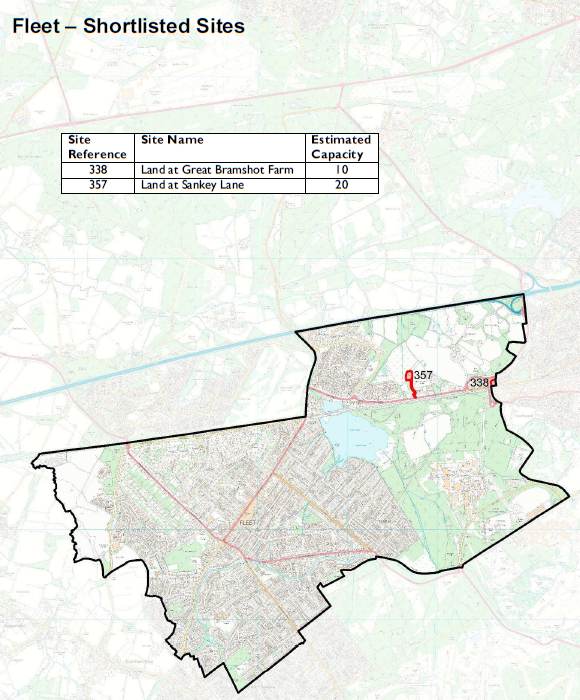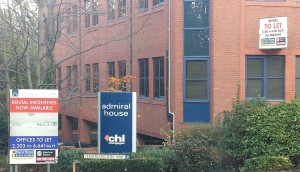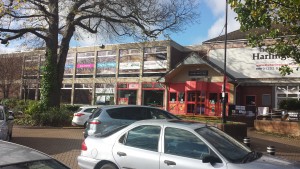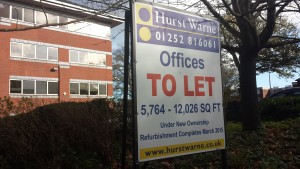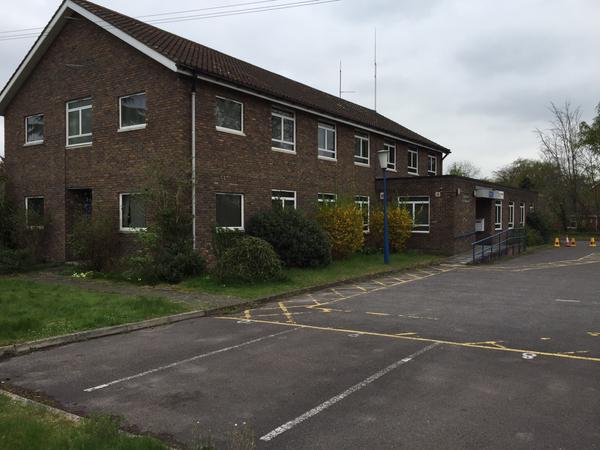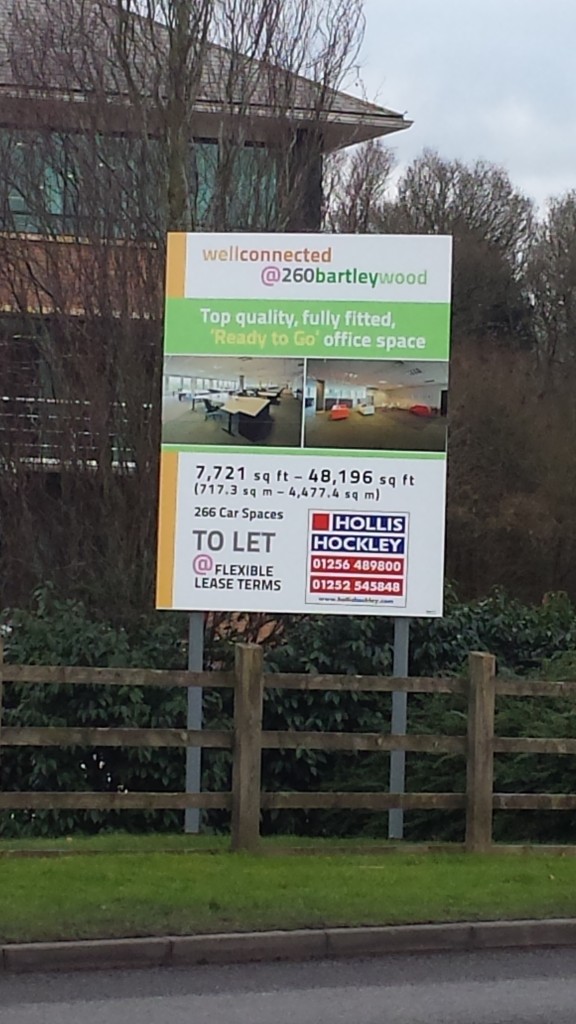We have done some further analysis on Hart’s Strategic Housing Land Availability Assessment (SHLAA) and come to the conclusion that Hart’s housing needs can be met from brownfield sites alone. We believe this is a potentially viable solution that should form part of the forthcoming Housing Options consultation as part of the Local Plan. Instead Hart Council have ignored the wishes of 2,130 people who signed the WeHeartHart petition and only put forward solutions that involve concreting over vast swathes of our countryside.
[Updated 2 March 2016 to add in the new brownfield SHLAA sites as described here]
[Updated 31 March 2016 to include Pyestock (aka Hartland Park)]
[Updated 30 August 2016 to re-set target to 2,350 now that Moulsham Lane, Yateley has been given the go ahead]
So, how have we arrived at our conclusion?
Brownfield sites in the SHLAA
We have been through the SHLAA and identified those sites that are mostly or wholly brownfield in nature, and added up total capacity as recorded in the SHLAA. Pyestock (aka Hartland Park), is now also an official SHLAA site. In total, these sites amount to between 3,208 and 3,250 homes at an average density of a relatively modest 28 dwellings per hectare (dph). The detail is shown in the table below:
| Parish | Ref. | Name | Brownfield Capacity in Table 1 in DLP | Site Assessment Capacity (Low) | Site Assessment Capacity (High) | Size (Ha.) | Low Density (dpa) |
|---|---|---|---|---|---|---|---|
| Blackwater and Hawley | SHL21 | Linkwater Cottages, Blackwater | 12 | 12 | 0.64 | 18.75 | |
| Blackwater and Hawley | SHL100 | Sun Park, Guillemont Park North | 300 | 320 | 320 | 12 | 26.66 |
| Bramshill | SHL106 | Bramshill (Police Training Centre) | 250 | 250 | 10 | 25 | |
| Church Crookham | SHL28 | 26/32 Bowenhurst Road | 8 | 6 | 6 | 0.42 | 14.28 |
| Crookham Village | SHL158 | Crondall House, Fleet | 27 | 27 | 1.13 | 23.89 | |
| Dogmersfield | SHL39 | Fermoy, Farnham Road | 5 | 10 | 2.23 | 2.24 | |
| Dogmersfield | SHL55 | Land at Church Lane, Dogmersfield | 20 | 20 | 0.82 | 24.39 | |
| Elvetham Heath | SHL104 | Land at Elvetham Heath | 45 | 45 | 45 | 2.25 | 20 |
| Eversley | SHL127 | Land at Paul’s Field, Eversley | 70 | 70 | 2.8 | 25 | |
| Eversley | SHL140 | Land off Warbrook Lane | 53 | 53 | 1.76 | 30.11 | |
| Ewshot | SHL36 | Dachs Lodge, Redfields, Church Crookham | 29 | 29 | 1.2 | 24.16 | |
| Ewshot | SHL80 | Tanglewood, Ewshot | 7 | 7 | 0.31 | 22.58 | |
| Ewshot | SHL174 | Peacocks Nursery Garden Centre | 105 | 105 | 3.5 | 30 | |
| Ewshot | SHL235 | Land at Willow Croft, Church Crookham | 50 | 50 | 2.75 | 18.18 | |
| Fleet | SHL41 | Imac Systems, Fleet | 6 | 6 | 6 | 0.05 | 120 |
| Fleet | SHL42 | Camden Walk, Fleet | 9 | 8 | 8 | 0.24 | 33.33 |
| Fleet | SHL50 | Waterfront Business Park, Fleet | 60 | 60 | 1.46 | 41.09 | |
| Fleet | SHL69 | 18 Church Road, Fleet | 10 | 10 | 0.07 | 142.85 | |
| Fleet | SHL102 | Land at Bramshot Lane | 45 | 45 | 1.8 | 25 | |
| Fleet | SHL113 | Thurlston House | 17 | 12 | 12 | 0.68 | 17.64 |
| Fleet | SHL245 | Land at 154-158 Albert Street & Fleet Road | 14 | 8 | 8 | 0.18 | 44.44 |
| Fleet | SHL275 | Land at Little Mead, Fleet | 12 | 17 | 1.06 | 11.32 | |
| Fleet | SHL320 | Fleet Town Centre Zone 2 | 20 | 150 | 150 | 1.8 | 83.33 |
| Fleet | SHL322 | Fleet Town Centre Police Station | 17 | 37 | 37 | 0.61 | 60.65 |
| Fleet | SHL357 | Land at Sankey Lane, Fleet | 20 | 20 | 0.64 | 31.25 | |
| Fleet | TBA | Pyestock (aka Hartland Park) | 1,500 | 1,500 | 48.2 | 38.1 | |
| Hartley Wintney | SHL95 | Nero Brewery, Hartley Wintney | 6 | 6 | 0.15 | 40 | |
| Hartley Wintney | SHL216 | Land adj. to James Farm Cottages, Hartley Wintney | 6 | 6 | 0.29 | 20.68 | |
| Hook | SHL111 | Hook Garden Centre, Reading Road, Nr. Hook | 57 | 57 | 4.47 | 12.75 | |
| Long Sutton | SHL296 | Old Dairy, Long Sutton | 5 | 5 | 0.2 | 25 | |
| Odiham | SHL29 | Land at Butts End | 6 | 6 | 0.4 | 15 | |
| Odiham | SHL66 | Rear garden of 4 Western Lane, Odiham | 16 | 16 | 0.64 | 25 | |
| Odiham | SHL119 | Land at the rear of Longwood, Odiham | 9 | 9 | 0.31 | 29.03 | |
| South Warnborough | SHL70 | Stables at Lees Cottage, South Warnborough | 5 | 5 | 0.25 | 20 | |
| South Warnborough | SHL172 | Granary Court, South Warnborough | 16 | 16 | 0.69 | 23.18 | |
| Winchfield | SHL34 | Land adjoining Winchfield Court | 18 | 25 | 1.06 | 16.98 | |
| Winchfield | SHL84 | Land at Winchfield Lodge | 60 | 60 | 3.8 | 15.78 | |
| Winchfield | SHL114 | Trimmers Cottage, Winchfield Hurst | 12 | 12 | 0.49 | 24.48 | |
| Church Crookham | SHL81 | Vertu, Beacon Hill Road, Church Crookham | 65 | 70 | 1.76 | 36.93 | |
| Blackwater and Hawley | SHL176 | Hawley House, Hawley | 8 | 10 | 0.3 | 26.66 | |
| Crondall | SHL178 | Broden Stables & Stable Yard, Crondall | 14 | 27 | 1.4 | 10 | |
| Crondall | SHL179 | Bowenhurst Lane, Crondall | 30 | 35 | 1.5 | 20 | |
| Hartley Wintney | SHL189 | Land at James Farm, Hartley Wintney | 8 | 8 | 0.31 | 25.8 | |
| Total | 3,208 | 3,250 | 117 | 27.9 |
A number of these sites are “not currently developable” according to Hart. But most of the green field sites they have put forward are also not currently developable. We believe that the issues surrounding brownfield sites should capable of being resolved more easily than those for green field sites.
Sites not in the SHLAA
There are a number of sites not in the SHLAA that nevertheless should be considered that amount to around 785 additional homes. These include the parts of Ancells Farm, Bartley Wood and Fleet High Street that have not already been permitted or counted elsewhere. We have also counted the complex of under-utilised offices that include Admiral House, Flagship House, Hart Offices and Harlington centre in Fleet. Much of this site was recommended by Fleet Future, but for some reason Hart Council have ignored it. But we can think of no reason why a council that was truly committed to a brownfield first strategy would not offer up its own under-utilised offices to be part of new, mixed use development and move to one of the other vacant office blocks in the district. These sites, with an allowance for parts of sites that have already been permitted, are shown in the table below.
| Parish | Site Description | Estimated capacity | Note |
|---|---|---|---|
| Fleet | Admiral House, Flagship House, Hart Offices and Harlington centre | 350 | Paper by Gareth Price identified 775 units on a larger site incorporating much of this area |
| Fleet | Ancells Farm | 370 | From Stonegate report |
| Fleet | Fleet vacant offices | 220 | From Stonegate report |
| Hook | Bartley Wood | 200 | From Stonegate report |
| Less units already granted permission or already counted | -355 | Part of Ancells Farm and Barley Wood already granted. SHL 320 already counted | |
| Total | 785 |
Conclusions
Drawing this together, there’s capacity for between 3,993 and 4,035 units on brownfield sites, without increasing the density on any of the SHLAA sites.
Now, according to Hart, we have to find space for a further 2,350 homes (now that 150 houses have been approved at Moulsham Lane, Yateley), according to the current Strategic Housing Market Assessment (SHMA). This shows that we have now more than met our remaining needs from brownfield sites alone. We certainly do not need a new town at Winchfield or any new urban extensions in Hook, Fleet or Elvetham Heath.
However, we also know that Alan Wenban-Smith has challenged the SHMA and said that we need around 2,000 fewer houses. If this were accepted by the inspector, we would have an even bigger surplus of brownfield capacity to take into the next planning period.
We also know that the SHMA is being revised, and the Government has published revised population and household forecasts earlier this year and these showed much lower figures for Hart. Again, this should result in a lower housing allocation, and we would end up with a surplus of brownfield sites until the next planning period.
This begs the question why Hart Council is not including a formal brownfield option in its forthcoming consultation, when that was the clear view of the 2,130 people who signed the WeHeartHart petition. Persisting with new town and urban extension solutions is untenable. Please do get involved with this consultation and respond to it using our guide on our dedicated page about this consultation here.



































